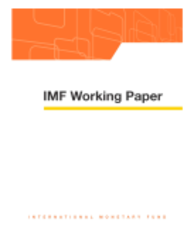
Sharp Reductions in Current Account Deficits : An Empirical Analysis
The paper studies determinants and consequences of sharp reductions in current account imbalances (reversals) in low- and middle-income countries. It poses two questions: what triggers reversals, and what factors explain how costly reversals are? It finds that both domestic variables, such as the current account balance, openness to trade, and the level of reserves, and external variables, such as terms of trade shocks, U.S. real interest rates, and growth in industrial countries, seem to play important roles in explaining reversals in current account imbalances. It also finds some evidence that countries with a less appreciated real exchange rate, higher investment, and more openness before the reversal tend to grow faster after a reversal occurs.
Publication date: December 1997
ISBN: 9781451858228
$15.00
Add to Cart by clicking price of the language and format you'd like to purchase
Available Languages and Formats
| English |
Prices in red indicate formats that are not yet available but are forthcoming.
Topics covered in this book
This title contains information about the following subjects.
Click on a subject if you would like to see other titles with the same subjects.
Money and Monetary Policy , Money and Monetary Policy , International - Economics , International - Economics , Current account deficits , current account sustainability , capital flows , current account , current account deficit , current account imbalances , current account balance
Also of interest
Summary
Copyright © 2010 - 2025
Powered by:
AIDC



